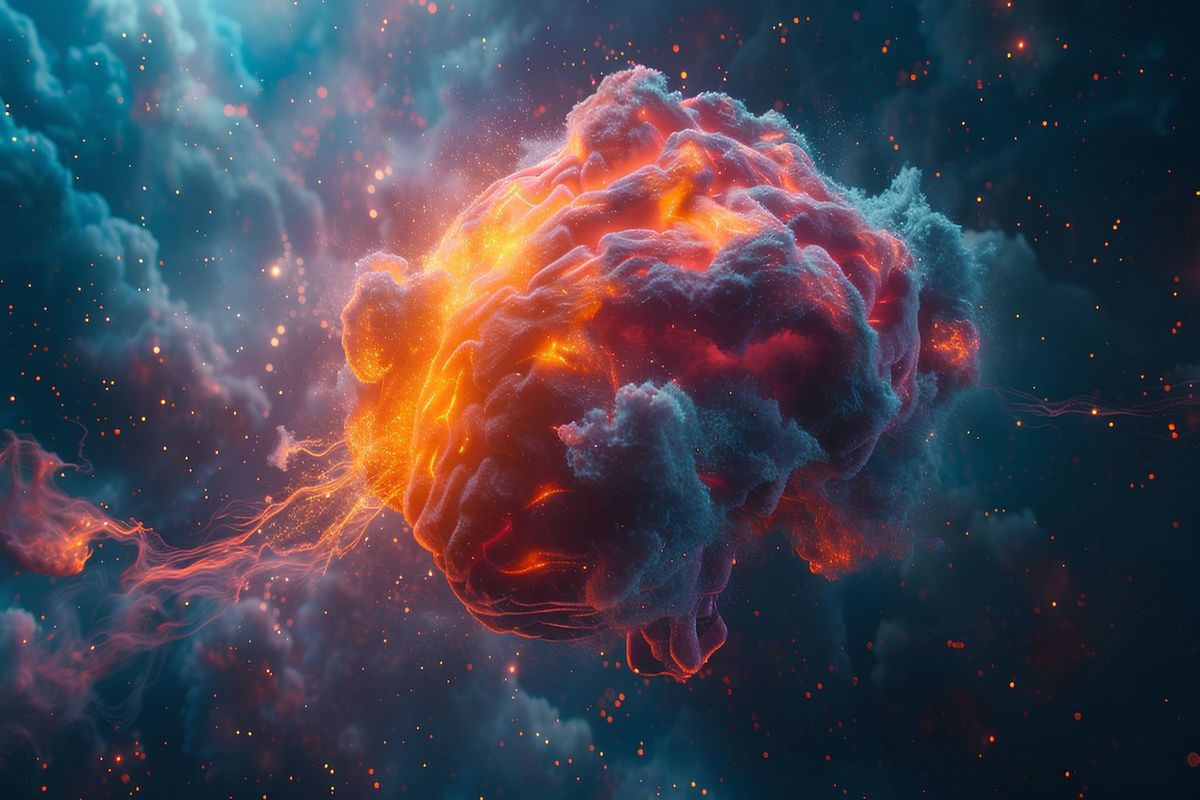Cosmic Clue: Magnetar Flares May Forge Gold, Platinum and Uranium in Deep Space
A recent study proposes a theory on how some of the universe's most valuable elements are produced.

A flash of high-energy radiation that rippled through space in December 2004 may have quietly rewritten part of the story for how the universe forges its heaviest elements — including gold, platinum and uranium.
In a breakthrough building on two decades of satellite data and cutting-edge theoretical modeling, a group of astrophysicists has proposed that rare flares from magnetars may be responsible for producing significant quantities of the universe’s r-process elements, long thought to arise primarily from supernovae or neutron star collisions.
“It’s a substantial leap in our understanding of heavy elements production,” said Brian Metzger, professor of physics at Columbia University and senior research scientist at the Flatiron Institute’s Center for Computational Astrophysics.
“This is really just the second time we’ve ever directly seen proof of where these elements form,” he added.
The new research, published last week in "The Astrophysical Journal Letters," centers on a gamma-ray signal recorded by NASA and European Space Agency telescopes in 2004 — one that has defied explanation until now.
What are magnetars?
Magnetars are among the most extreme objects in the cosmos.
Born from the supernova deaths of massive stars, magnetars condense more mass than the Sun into a city-sized sphere just 12 miles across. Their magnetic fields are up to a thousand times stronger than those of ordinary neutron stars and trillions of times more intense than anything produced on Earth.
Occasionally, these hypermagnetic neutron stars experience “starquakes,” which are sudden, violent fractures in their crusts caused by internal magnetic stress. These quakes unleash giant flares of X-rays and gamma rays so powerful that they can interfere with satellites from halfway across the galaxy.
What remained unclear until now was if these outbursts could also manufacture heavy atoms. That possibility is no longer just theoretical. The clue came from a December 2004 flare, one of the brightest ever observed in our galaxy.
“When initially building our model and making our predictions back in December 2024, none of us knew the signal was already in the data,” Anirudh Patel, the paper’s lead author and a doctoral student at Columbia University, told CNN.
Team members reanalyzed archived data from the European Space Agency's now-retired INTEGRAL (INTErnational Gamma-Ray Astrophysics Laboratory) mission and NASA’s RHESSI and Wind satellites.
To their surprise, they found a gamma ray glow appearing minutes after the initial burst — one that matched their predicted signature of freshly forged r-process nuclei cooling off.
Theoretical modeling had already suggested that material ejected during a magnetar flare could undergo rapid neutron capture (the r-process), creating heavy elements. The data now strongly suggests that this process had, in fact, occurred.
Making the universe’s bling
R-process elements like gold, platinum and uranium are too heavy to form in the fusion furnaces of normal stars. Instead, they require conditions with free-flying neutrons and intense heat — typically found in rare, cataclysmic events.
Until recently, the leading candidate was a kilonova: the merger of two neutron stars. A 2017 observation of such a collision provided direct evidence of heavy element formation and was dubbed a “cosmic gold factory.”
But kilonovas are relatively infrequent and tend to occur later in a galaxy’s evolution. Magnetars, on the other hand, may have been active much earlier — within a few hundred million years of the Big Bang.
Metzger and his colleagues estimate that a single magnetar flare could eject as many as 2 million billion billion kilograms of heavy atoms. Each flare acts as a kind of elemental forge. As the magnetar’s magnetic field snaps and reorganizes, it sends shock waves through the crust, hurling material into space. This ejected matter enters a crucible of extreme pressure and neutron density, triggering chain reactions that build up complex nuclei.
The conditions, researchers say, are just right for the formation of r-process elements — not just gold and platinum, but also uranium and other neutron-rich atoms.
More research needed
Not everyone in the astrophysical community is ready to declare magnetars the newest gold mine of the cosmos.
Dr. Eleonora Troja, an associate professor at the University of Rome who led the discovery of X-rays from the 2017 neutron star merger, urged caution while speaking to CNN.
“The production of gold from this magnetar is a possible explanation for its gamma-ray glow, one among many others as the paper honestly discusses at its end,” she said.
“I wouldn’t go so far as to say that a new source of gold has been discovered.”
She pointed out that magnetars are “very messy objects” whose flares can sometimes yield lighter elements like zirconium or silver instead of gold, depending on the specific conditions.
Astronomers now eagerly await the next giant magnetar flare, hoping to catch it in real time.
Future missions like NASA’s Compton Spectrometer and Imager, slated for a 2027 launch, promise greater sensitivity to detect and study these fleeting signals across multiple wavelengths.
For now, scientists have added one more explosive event to the list of stellar alchemists.
Whether magnetars are a main supplier of heavy elements or just one piece of the puzzle, they’ve earned a spotlight in the ongoing investigation into how the universe crafts some of its most valuable matter.
Don't forget to follow us @INN_Resource for real-time news updates!
Securities Disclosure: I, Giann Liguid, hold no direct investment interest in any company mentioned in this article.
- Goldman Sachs Says Asteroid Mining Could Actually Happen ›
- Space Mining Startup AstroForge Sets Sights on Off-Earth Mission in 2025 ›





